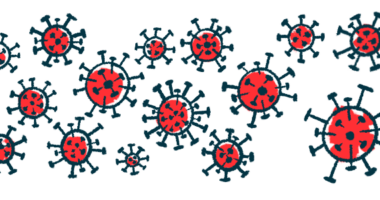Four Cases of Acquired Hem A Reported After 2nd COVID-19 Vaccine

Four people in a region of Northern Italy were diagnosed with acquired hemophilia A (AHA) weeks after receiving the second dose of a vaccine against COVID-19, scientists reported.
The unusually high number of newly identified acquired hemophilia A cases within eight months in the Italian province led the investigators to suspect the Pfizer-BioNTech vaccine.
But they also noted that three of these four people had autoimmune disorders or cancer, which could have heightened their susceptibility to this form of hemophilia.
Moreover, “the overall number of cases observed does not allow [us] to draw any definitive conclusion over a possible causal relationship,” they wrote, adding that establishing such a relationship “would need more epidemiological and pharmacovigilance data about suspected vaccine-related adverse events.”
Their report, “Four cases of acquired hemophilia A following immunization with mRNA BNT162b2 SARS-CoV-2 vaccine,” was published as a letter to the editor in the journal Thrombosis Research.
Hemophilia A is caused by a deficiency in a clotting protein called factor VIII (FVIII). Most hemophilia A cases are due to a gene mutation. But in rare cases, the disorder is acquired through immune system abnormalities — often due to a cancer or other diseases — that lead to the production of neutralizing autoantibodies against FVIII.
AHA has also been reported to follow an infection or a vaccination, including SARS-CoV-2 infection or vaccination since the beginning of the COVID-19 pandemic. SARS-CoV-2 is the virus that causes COVID-19.
A research team in the Reggio Emilia province reported four AHA cases identified after each person had been given a second dose of Comirnaty, the name given the Pfizer-BioNTech vaccine. All cases occurred with the first eight months of province’s vaccination campaign.
Comirnaty contains a molecule called messenger RNA (mRNA) with instructions for making the SARS-CoV-2’s distinctive “spike” protein.
“The same mRNA vaccine was reported in association with other immune complications and in particular with AHA by other authors,” the researchers wrote.
The first patient was an 86-year-old man, admitted to the their hospital with spontaneous disseminated hematomas (pools of clotted blood usually caused by trauma) 14 days after his second dose. This man was under low-dose steroid therapy for rheumatic polymyalgia, an inflammatory disorder.
He also had severe anemia and his blood took longer than normal to clot. FVIII inhibitors were detected in his blood.
Red blood cell transfusions and treatment with methylprednisolone, an immunosuppressant and anti-inflammatory agent, resolved the man’s hematomas and he was discharged. No bleeding events and FVIII inhibitors could not be detected at a follow-up visit seven months later.
A 73-year-old woman with rheumatoid arthritis and Sjögren’s syndrome also developed spontaneous hematomas on her tongue, jaw, and right knee a few days after receiving the second dose of Comirnaty. She had noticed a hematoma on her tongue 14 days after a first vaccine dose.
Her blood also took longer than normal to clot and FVIII inhibitors were detected in her bloodstream. All issues resolved after treatment with methylprednisolone.
The third case was an otherwise healthy 67-year-old man who was admitted to the emergency room about 1.5 months after a second Comirnaty dose due to a large hematoma in the tongue that extended into his neck.
Another hematoma appeared on his upper left arm and his hemoglobin levels — the protein in red blood cells that carries oxygen through the body — dropped.
The man was given recombinant (man-made) activated factor VII, used to treat and control spontaneous bleeds in people with hemophilia A with inhibitors, along with immunosuppressants (prednisone and cyclophosphamide). At a follow-up visit three months after his discharge, no bleeding or FVIII inhibitors were detected.
A 77-year-old man with relapsed bladder cancer came to the hospital reporting blood in the urine (hematuria). He had received the second dose of Comirnaty 52 days earlier. As his blood’s clotting time was long and FVIII inhibitors were detected, he was treated with recombinant activated factor VII, methylprednisolone, and rituximab, a medication that lowers the numbers of antibody-producing immune B-cells.
This patient developed sepsis — an extreme response to infection — during his hospital stay and died of respiratory complications seven weeks after hospital admission.
Because the “immunomodulatory effects” of COVID-19 vaccination are “still poorly understood … four cases of AHA in our province could be of interest and could sensitize healthcare personnel toward a possible complication of SARS-Cov-2 immunization,” the scientists noted.
But with three of these four patients having pre-existing conditions and “co-occurence of autoimmune diseases or immune derangement … are both well-known [AHA] phenomena, these associations could reflect susceptibility to autoimmunity potentially triggered by vaccination,” they added, noting that two other AHA cases during this time were diagnosed in people “not vaccinated nor affected by COVID-19.”
Vaccination benefits, the scientists continued, “exceed potential side effects and play a central role in individual and public health to effectively protect people from COVID-19 and to stop the pandemic.”






